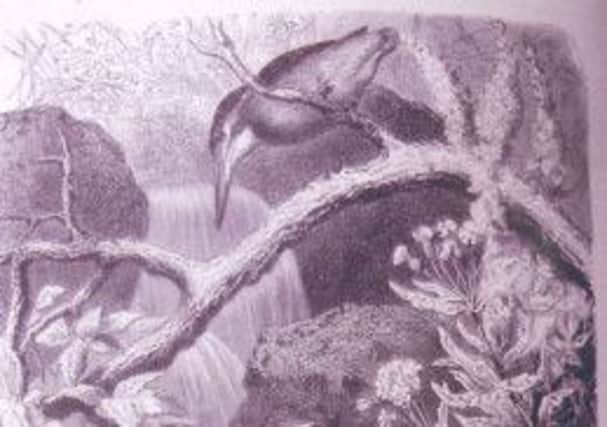RICHARD WILLIAMSON: The kingfisher, harlequin, and cinnamon quill


He landed a 2lb trout and took it home for supper.
All looked completely normal until he cleaned it. Inside he found a young kingfisher.
The bird had fallen in the water on its first flight. Is this normal? Well, you might ask: what is normal?
Advertisement
Hide AdAdvertisement
Hide AdI have myself caught brown trout on the River Loman in Devon using a Devon Minnow.
When you hold one in your hand you say what does a trout see in a one-inch lump of brass shaped like a small propeller that revolves on a spindle?
You can understand a trout eating an earthworm, a caddis-fly, or a mayfly. But they are easily fooled by lures and I have a box full of them which my father used when he was writing Salar the Salmon.
There is no look-alike kingfisher among them, I am glad to say. But there is a small decoy canvas fish with propellers on its gills which will make it spin and wriggle like a real tiddler. On its back are painted ‘rose moles in stipples on trout that swim’ in the words of Gerard Manley Hopkins in his poem Glory to God for Dappled Things.
Advertisement
Hide AdAdvertisement
Hide AdAlso in the box is ‘Charley’s Crayfish Crawler’, bought by father during his American fishing trip in the 1930s. On the side of the box is the legend: ‘Fish lure with Charley’s bucktail. Place pork rind on curve of hook’. The lure is a stainless steel crayfish with red-painted shoulders, black bristle whiskers, a salmon hook on its nose and a propeller on its tail.
Here then are just two of the oddities fish will put down their gullets. I am reminded of the puzzled fisherman in Pericles by Shakespeare who asked his boss how it was that fish lived in the sea. The older man replied: ‘Why, as men do a-land. The great ones eat up the little ones’.
Bigger fish eat lesser fish, and so ad infinitum, also barbs, bacon, and birds it seems. Here is part of the art of landing supper on the shore.
The finer art is with the fly. Therein lies the challenge that in true Hemingway style elevates man to hero even if he fails.
Advertisement
Hide AdAdvertisement
Hide AdFather’s library contained books by every author from Izaak Walton to Ted Hughes. In between was Plunket-Greene with Where the Bright Waters Meet. Like textbooks on moths, all with such strange names, are printed the hand-coloured engravings of artificial flies beneath their tissue guards.
Harlequin, Artful Dodger and Cinnamon Quill are three, all looking almost the same but all with different threnodies for the trout for whom they spin deceit. There are instructions on how to make them, too.
For the Spent Gnat, for instance, the wings should be made from the feathers of a summer duck, or Carolina. The head made from a bronze peacock herl; hackles from a hen pheasant and a good blue Andalusion cock; the whisk from a brown mallard and the body from a white horse hair.
No doubt the feathers from the kingfisher would be found irresistible.